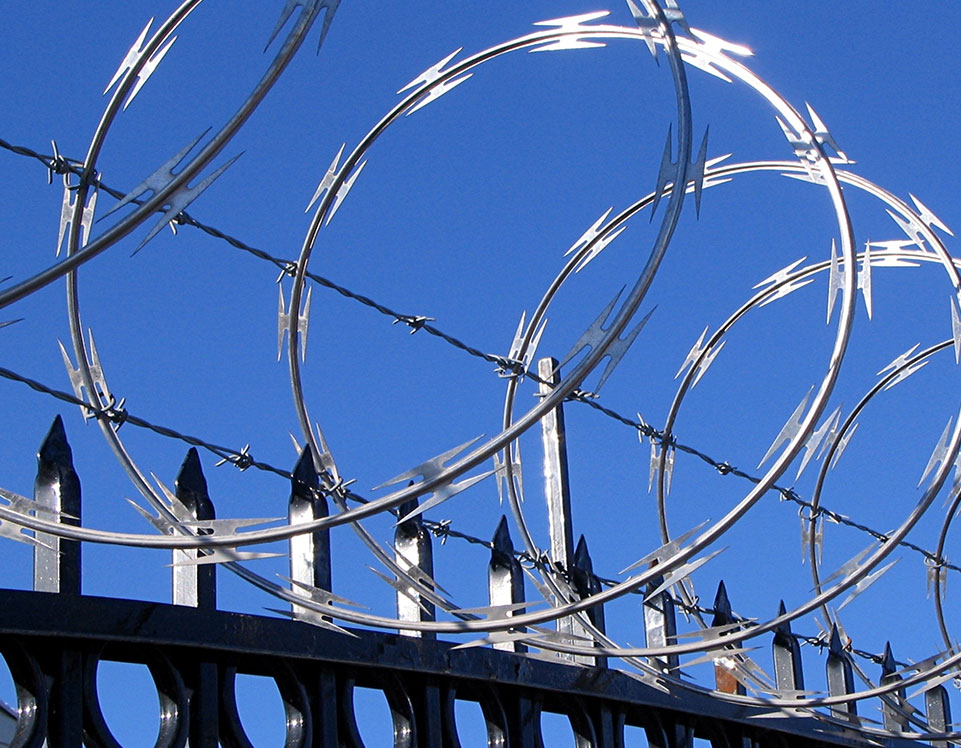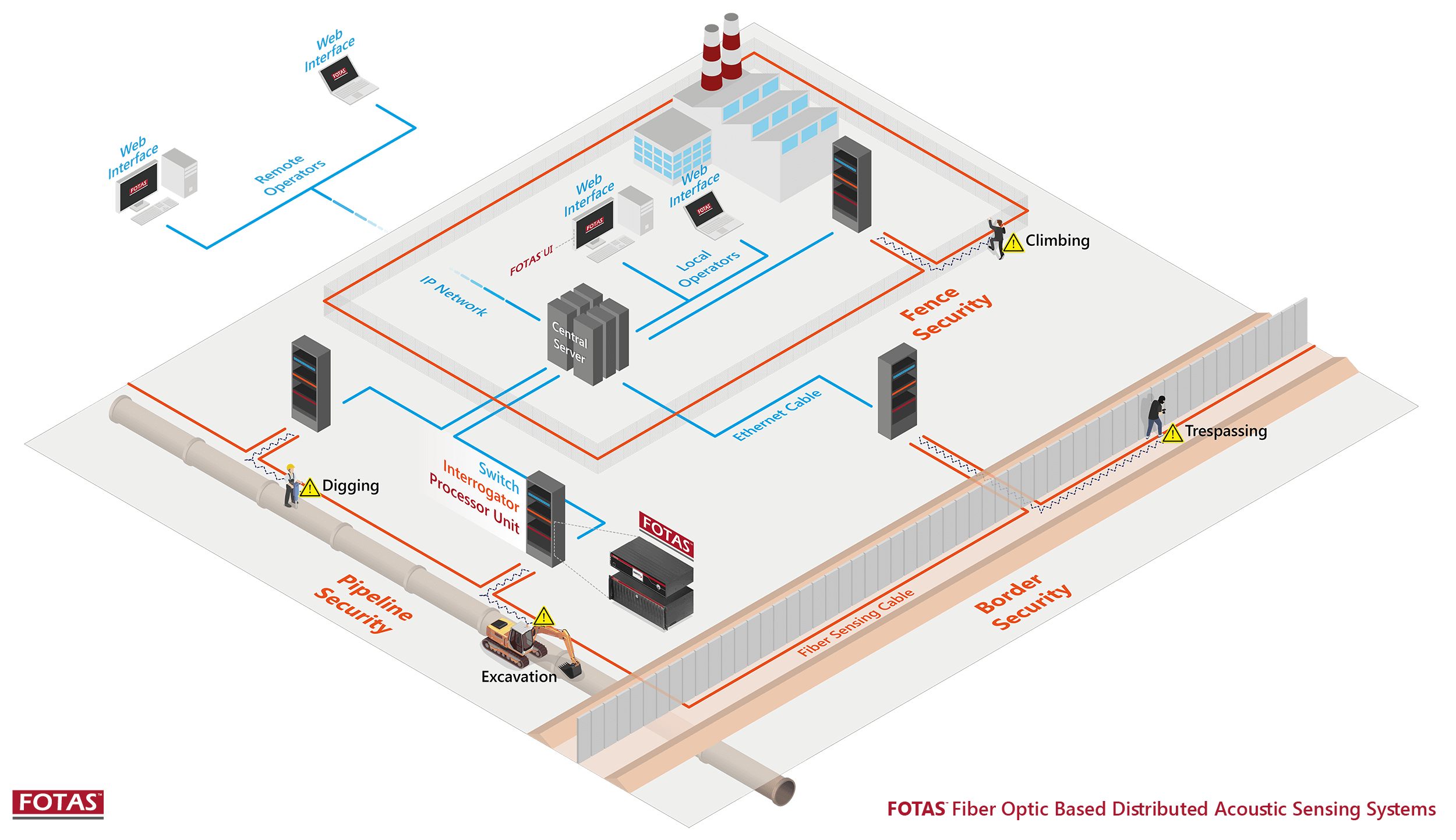How Security Fibers Are Used to Improve the Effectiveness of Security Surveillance Systems
How Security Fibers Are Used to Improve the Effectiveness of Security Surveillance Systems
Blog Article
The Ultimate Guide to Fiber Optic Safety Solutions for Your Organization
In an age where safety concerns are paramount for companies, understanding the intricacies of fiber optic technology can be transformative. This overview lays out exactly how integrating fiber optic protection systems not just enhances information security but likewise offers benefits like resistance to disturbance and real-time monitoring capabilities.
Recognizing Fiber Optic Technology

The core of a fiber optic cord contains a slim glass or plastic facility, surrounded by a cladding layer that reflects light back right into the core. fiber optic security system. This design guarantees marginal loss of signal stamina, also over considerable distances. There are two key kinds of fiber optic cable televisions: single-mode and multi-mode. Single-mode fibers are created for long-distance transmission, while multi-mode fibers are suitable for shorter ranges, frequently utilized within structures.
Optical fiber are not only faster but also more safe than typical circuitry. Their intrinsic resistance to electro-magnetic interference and the trouble of using the signal without detection make them a preferred option for organizations prioritizing information honesty and safety. As companies significantly depend on protected and reliable interaction systems, understanding fiber optic innovation ends up being essential for informed decision-making.
Trick Advantages of Fiber Optic Protection
When taking into consideration safety and security options for a business, the benefits of fiber optic systems are specifically engaging. Fiber optic modern technology uses phenomenal data transmission speeds and bandwidth capacity, making it suitable for taking care of high-resolution video feeds from surveillance cameras. This capacity guarantees that safety and security workers receive real-time data, improving total feedback times to potential safety and security risks.
Additionally, fiber optic cables are inherently resistant to electromagnetic disturbance, which can jeopardize the integrity of typical copper-based systems. This resistance makes sure that the information sent stays secure and uninterrupted, providing a more reputable safety infrastructure. Furthermore, fiber optics are less prone to physical damage, as they are made from glass rather than metal, minimizing maintenance prices and downtime.
One more substantial advantage is the boosted scalability of fiber optic systems. As service demands advance, fiber networks can be easily broadened to fit added security devices without substantial overhauls to the existing framework. Fiber optic systems use boosted cybersecurity features, consisting of file encryption abilities that safeguard sensitive data from unauthorized gain access to. Jointly, these benefits make fiber optic safety and security systems a robust option for services seeking to enhance their security steps.
Installation Process and Factors To Consider
Considering the complexities included, the installation process of fiber optic protection systems needs mindful planning and execution. The first action includes a detailed website assessment to determine optimum areas for cabling and equipment. This analysis must take into consideration ecological elements, existing facilities, and possible susceptabilities.

In addition, the setup needs to adhere to regional building regulations and market criteria. This may include coordinating with different stakeholders such as building managers, IT teams, and security workers to guarantee seamless assimilation with existing systems.
Post-installation, strenuous testing is essential to verify system performance and determine any issues that might develop. By focusing on these considerations during the installment process, services can guarantee a robust and reliable fiber optic protection system that satisfies their specific safety requirements.
Most Recent Advancements in Fiber Optic Security
Recent innovations in fiber optic innovation have considerably improved the capacities of safety systems for businesses. One of one of the most significant technologies is the integration of fiber optic sensors that can identify resonances and invasions along the perimeter of a facility. These sensors give real-time monitoring, enabling rapid reaction to possible breaches.
Additionally, the growth of distributed fiber optic picking up technology enables the continuous tracking of huge locations with a single fiber cord. This approach not just reduces setup costs yet likewise boosts the dependability of keeping track of systems by getting rid of the requirement for numerous, different sensors.
In addition, Look At This advancements in multiplexing methods have actually made it possible for organizations to transfer vast quantities of information over fiber optic networks, enhancing the capabilities of video clip monitoring systems. High-definition video clip feeds can currently be sent over fars away without loss of top quality, guaranteeing that safety workers have accessibility to clear and workable information.
Last but not least, using man-made intelligence (AI) along with fiber optic systems is reinventing risk discovery. AI formulas can analyze data from fiber optic networks to identify unusual patterns or behaviors, enabling for positive safety procedures. These innovations collectively represent a substantial leap forward in fiber optic protection modern technology.
Choosing the Right System for Your Company
Picking the proper fiber optic safety and security system this page for your business is important for ensuring optimum protection and peace of mind. To make an educated choice, analyze your particular safety and security requirements, taking into consideration variables such as the dimension of your properties, the nature of your procedures, and prospective susceptabilities.
Begin by evaluating the degree of protection needed; for circumstances, high-risk settings might demand advanced systems with incorporated surveillance and intrusion detection capabilities. Next, think about scalability; as your business grows, your safety and security system must can expanding to suit boosted demands without considerable overhauls.
Furthermore, investigate the dependability and efficiency of various systems. Seek service providers with well read what he said established online reputations and customer testimonials that vouch for their service quality. It's likewise advisable to inquire about the modern technology's compatibility with existing framework, ensuring a smooth assimilation process.
Verdict
In final thought, fiber optic safety systems provide a durable solution for enhancing organization security facilities. The combination of high-speed data transmission, resistance to electromagnetic disturbance, and advanced surveillance abilities considerably enhances general defense (fiber optic security system). By understanding the modern technology, recognizing its advantages, and taking into consideration the installation procedure, organizations can make enlightened choices. The most recent advancements additionally boost the performance of these systems, ensuring that businesses stay protected and versatile in an ever-evolving hazard landscape.
Report this page